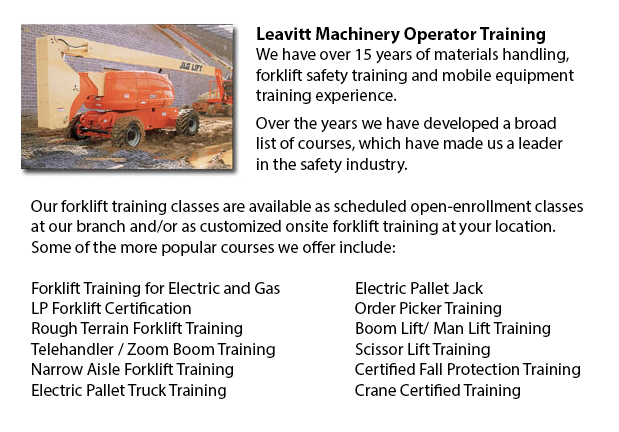
Kelowna Aerial Boom Lift Ticket - Aerial forklifts might be used to accomplish several unique tasks executed in hard to reach aerial spaces. Many of the tasks associated with this type of jack include performing daily upkeep on buildings with high ceilings, repairing telephone and utility cables, lifting heavy shelving units, and pruning tree branches. A ladder might also be used for some of the aforementioned jobs, although aerial lifts offer more safety and strength when correctly used.
There are many versions of aerial lift trucks existing on the market depending on what the task needed involves. Painters sometimes use scissor aerial hoists for example, which are categorized as mobile scaffolding, useful in painting trim and reaching the 2nd story and higher on buildings. The scissor aerial hoists use criss-cross braces to stretch and lengthen upwards. There is a platform attached to the top of the braces that rises simultaneously as the criss-cross braces raise.
Bucket trucks and cherry pickers are a different kind of aerial hoist. They contain a bucket platform on top of an extended arm. As this arm unfolds, the attached platform rises. Platform lifts use a pronged arm that rises upwards as the lever is moved. Boom hoists have a hydraulic arm which extends outward and elevates the platform. All of these aerial lifts have need of special training to operate.
Through the Occupational Safety & Health Association, also called OSHA, instruction courses are on hand to help ensure the employees meet occupational standards for safety, machine operation, inspection and repair and machine cargo capacities. Workforce receive qualifications upon completion of the classes and only OSHA certified employees should run aerial lifts. The Occupational Safety & Health Organization has developed rules to uphold safety and prevent injury when using aerial lifts. Common sense rules such as not using this machine to give rides and making sure all tires on aerial platform lifts are braced so as to hinder machine tipping are referred to within the rules.
Unfortunately, data reveal that greater than 20 aerial hoist operators pass away each year while operating and almost ten percent of those are commercial painters. The majority of these incidents were caused by improper tie bracing, therefore a few of these could have been prevented. Operators should make certain that all wheels are locked and braces as a critical safety precaution to stop the machine from toppling over.
Additional guidelines involve marking the surrounding area of the machine in a visible way to safeguard passers-by and to guarantee they do not approach too close to the operating machine. It is vital to ensure that there are also 10 feet of clearance among any electrical lines and the aerial lift. Operators of this apparatus are also highly recommended to always wear the appropriate safety harness while up in the air.
-
Kelowna Forklift Training Program
Kelowna Forklift Training Program - The lift truck is a common powered industrial vehicle which is in wide use these days. They are sometimes called hi los, lift trucks or jitneys. A departments store would use the forklift to unload and load merchan... More -
Kelowna Crane License
Kelowna Crane License - Crane operators ought to be "credentialed", that means they ought to have a crane operator certification or license. Credentialing is considered a mandatory governmental requirement in order to practice as an operator of a cra... More -
Kelowna Boom Lift Safety Training
Kelowna Boom Lift Safey Training - Boom lifts fall under the type of elevated work platform or aerial lifting device. Most usually used in warehousing, construction and industry; the boom lift is so versatile that it could be utilized in almost whate... More -
Kelowna Loader Training
Kelowna Loader Training - Loader Training - Any individual who would like to operate a forklift should take a Loader Training course in order to become a certified forklift truck operator. There are a variety of ways to obtain forklift training. Cour... More -
Kelowna Aerial Lift Safety Training
Kelowna Aerial Lift Safety Training - Each and every year, there are roughly 26 construction deaths attributed to the use of aerial lifts. Most of the craftsmen killed are electrical workers, laborers, painters, ironworkers or carpenters. The majorit... More -
Kelowna Crane Ticket
Kelowna Crane Ticket - Modern cranes can either be simple or complex, based upon the nature of the application they can carry out. For example, mobile cranes are somewhat simple units. A telescopic boom and even a steel truss mounts its movable platf... More -
Kelowna Boom Lift Operator Training
Kelowna Boom Lift Operator Training - The cherry picker work platform is a type of work platform, that will typically have a bucket or platform at the end of a hydraulic lifting system. The machine is likewise referred to as a man lift, boom lift, hy... More -
Kelowna Heavy Equipment Ticket
Kelowna Heavy Equipment Ticket - Depending on the nature of the job at hand, the kind of construction equipment that a heavy equipment operator makes use of differs. Every kind of machine is made to perform particular tasks in the most effective mann... More

Leavitt Operator Training
TOLL FREE: 1-888-254-6157
101-864 McCurdy Place
Kelowna, British Columbia
forkliftcertificationkelowna.com
Email Us
About Us


